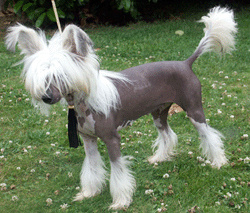 Driving to work in the morning the past several weeks, there have been occasional large flocks of geese and ducks flying . In the northern U.S. it’s time for the fall waterfowl migration south. In fact, the flock sizes have decreased in the past week, and several online sources concur that waterfowl migration has peaked, in mid December. Continue reading “The Benefit of a Cold, Dark Walk: Fall Waterfowl Migration in the Central United States”
Driving to work in the morning the past several weeks, there have been occasional large flocks of geese and ducks flying . In the northern U.S. it’s time for the fall waterfowl migration south. In fact, the flock sizes have decreased in the past week, and several online sources concur that waterfowl migration has peaked, in mid December. Continue reading “The Benefit of a Cold, Dark Walk: Fall Waterfowl Migration in the Central United States”
Author: Kari Kenefick
A New Role for Reactive Oxygen Species: Can We be Aged and Thin?

Since the 1980s, we’ve been told that aging can be accelerated by a build-up of free radicals in our cells. We’ve learned that to counteract the damage that free radicals (or reactive oxygen species, ROS) can wreak on our bodies, we should consume antioxidants like vitamins C and E, and phytochemicals.
In fact, the term “superfood” was coined for foods that contain high levels of antioxidants, phytochemicals and vitamins, foods like blueberries and carrots, spinach and kale, to name a few.
“Hold the phone”, as a pre-calculus professor of mine used to say. Turn off the blender and put down that shot glass of beet-carrot-lemon grass juice. This research just in: “Free Radicals Crucial to Suppressing Appetite”.
The research was published August 28, 2011 in the advanced online edition of Nature Medicine.
In this study, Yale University researchers reported that elevated levels of ROS in the brain activated satiety-generating neurons. Continue reading “A New Role for Reactive Oxygen Species: Can We be Aged and Thin?”
This is Your Hippocampus on Cortisol

Research published by Dr. Joyce Yau et al. in the Journal of Neuroscience earlier this year examined whether negative effects of cortisol on memory could be blocked using antagonists for brain receptors for cortisol.
The researchers noted that local brain amplification of glucocorticoids (cortisol) by 11beta-hydroxysteriod dehydrogenase type 1 (11beta-HSD1) is “pivotal” in age-related memory loss.
Cortisol acts by binding to cell receptors. In their research, Yau and colleagues found that when levels of cortisol are low, a particular cortisol receptor is bound. However, at higher concentrations, cortisol has a spillover effect and binds a second receptor. Binding to this second receptor activates cellular processes in the brain that cause memory impairment.
The receptors studied were the high-affinity mineralocorticoid receptor (MR) and low-affinity glucocorticoid receptor (GR). As models for memory impairment, they used aged C57BL/6J mice as controls. Also studied were 11beta-HSD1-deficient mice (-/-), which ordinarily show no age-related memory deficits. Mouse memory was tested with a spatial memory task, a Y maze. Continue reading “This is Your Hippocampus on Cortisol”
How “Happy” Wins
 “The science of happiness” is a catchy and promising title that was recently used for a series of articles on Newscientist.com.
“The science of happiness” is a catchy and promising title that was recently used for a series of articles on Newscientist.com.
So I took a look at some research and found an intriguing report highlighted in a Wall Street Journal article “Is Happiness Overrated”. This article was about research done at the University of Wisconsin by Carol Ryff and Jennifer Morozink, et al. (1) .
It turns out that happiness is not only sometimes hard to find (personal communication), it can also be difficult to define. I learned that there is: 1) more than one kind of happiness and; 2) all happiness is not created equal.
From Gray Wolf to Bulldog: Changes to the Dog Brain as Humans Reshape it’s Head

We humans are masters of reinvention. And we love our dogs. Over the past 12,000 years we’ve mixed that love of innovation and love of dogs, to create a species with more physical variation than any other species on Earth.

Much of this innovation has served us well. Domesticated dogs have protected our livestock and our homes, helped us hunt and retrieve game, and carried our belongings. And come the cold, snowy weather season, or a pesky avalanche, it’s nice to know that a Saint Bernard dog may be nearby with a cask of brandy on it’s collar. Seriously, rescue dogs have aided many a lost, stranded or endangered person.

Dog breeding has served to enhance the good traits as well as to remove from a dog breed, certain bad genetic components, such as predisposition to genetically-linked diseases, as well as traits such as hip dysplasia, and eye or cardiac anomalies.

As for the variations in type, dog breeding has developed such variety as a nearly hairless dog, dogs with highly shortened faces, and dogs with so much hair that their faces are difficult to distinguish.

The extremes affect height, weight, hair (or lack of hair, as is the case of the Chinese Crested dog). For that matter, many dogs have a haircoat that is shed, similar to wolves, coyotes and fox, while others (poodles and many terriors) have hair, that is not shed, but rather must be trimmed.
If you know a greyhound or collie dog, you know the long–headed feature, similar to that of the original dog ancestor, the gray wolf. This morphological feature is described as dolichocephalic (long-skulled). On the other hand, if you happen to be supporting the habits of, say a Neopolitan Mastiff or a Pug dog, that makes you in the caregiver of a brachiocephalic canine, that is a short-skulled dog. Such dog breeds show a greater deviation from the ancestral gray wolf than a long-skulled dog. And as a recent study shows, more than just the head shape of brachiocephalic dogs has changed.
A July 2010 report in PLos ONE (Roberts, T., et al.; 1), noted that the extreme diversity in shape and size found in domestic dogs extends to the canine skull.
The authors set out to determine if these apparent physical features, skull shape differences, translated to differences in brain structure.
Cephalic index (CI) of the study dogs was calculated from digital measurements of length and width of the skull. As a starting point, the authors used the the gray wolf, for which various reports listed a cephalic index of 50.9 to 51.9.
Eleven dogs, representing various breeds and crossbreeds were used. The dogs were from shelters, and had been recently euthanized, for reasons other than the purpose of this study. An additional two dogs used were English Springer Spaniels, who were also not euthanized for this study, rather were measured while under sedation.
The cephalic indices reported ranged from 42.2 in a greyhound to 87.2 in a shih tzu cross, the higher number indicating a shorter skull shape. The authors noted that body size and weight were closely related to CI in the domestic dogs studied.
The rather dramatic sagittal scans in the report, show a comparison of a brachiocephalic and dolichocephalic dogs with the brain outline and center of mass marked in red, and the olfactory bulb in yellow. The authors (in Figure 2) showed the two extremes of very short and very long-skulled dogs, with the brain positional differences no less striking.
The olfactory bulb was found to be positioned differently in dogs with a shortened skull. These dogs showed a definite ventral or forward (looking at a cross-section from the front of the nose to the back of the skull) shift of the brain, as well as of the olfactory bulb. Thus the authors note a strong correlation between a high CI and both central axis rotation ventrally, as well as a ventral rotation of the olfactory bulb.
This dog owner would be very interested in whether shorter–skulled dogs have behavorial changes that could be connected to their breeding. Let’s face it, the next time our dogs lunge at the dog walking by, it would help to be able to shrug and call out, “Sorry, short head”. Or, “He can’t help it, he was bred that way.”
Sadly, that’s not how it works. Once assuming ownership of a certain type of dog, the onus is on the owner to teach the dog what is and is not acceptable behavior.
But if future studies may show a connection between cephalic index of particular dog breeds and behavioral characteristics, that information might be useful in choosing a dog. Say you wanted a dog for protection and it had been proven that a pug’s head shape was not ideal for guard dog-type behavior. You would instead choose a Collie. Umm… make that a Doberman Pinscher. Of course Italian Greyhounds are also long-headed dogs, although known more for speed of flight, than for protective tendencies.
Reference
![]()
1. Roberts T, McGreevy P, & Valenzuela M (2010). Human induced rotation and reorganization of the brain of domestic dogs. PloS one, 5 (7) PMID: 20668685
Prairie Dogs: Small Creatures, Big Vocabulary
It is summer, July already! Vacation time for kids and the people that love them.
Though many years past, I recall fondly one of our first family trips to the Black Hills of South Dakota. While en route, we stopped in the Badlands National Park. Though the Badlands might appear a barren, treeless desert (and believe me, in the western summer sun it feels that way), the area is loaded with animal life. Particularly intriguing to me were some small rodent residents, the prairie dogs.
Continue reading “Prairie Dogs: Small Creatures, Big Vocabulary”Vitamin D and Asthma
We all like sunshine, right? In fact this time of year, some people pay a pack of moola and travel great distances in search of stronger solar.
Research reports continue to tout the benefits of vitamin D (1). In several studies from 2009, researchers found that patients with low blood levels of vitamin D had worse asthma symptoms than patients with higher serum vitamin D levels. In addition, patients with low vitamin D levels didn’t respond as well to asthma therapies as the patients with higher vitamin D levels.
A study done at National Jewish Health Center in Denver, Colorado, found that that low vitamin D levels influence a number of aspects of asthma, including lung function, bronchospasm and response to steroids. Results of this study are soon to be published in the American Journal of Respiratory and Critical Care Medicine (2). Continue reading “Vitamin D and Asthma”


